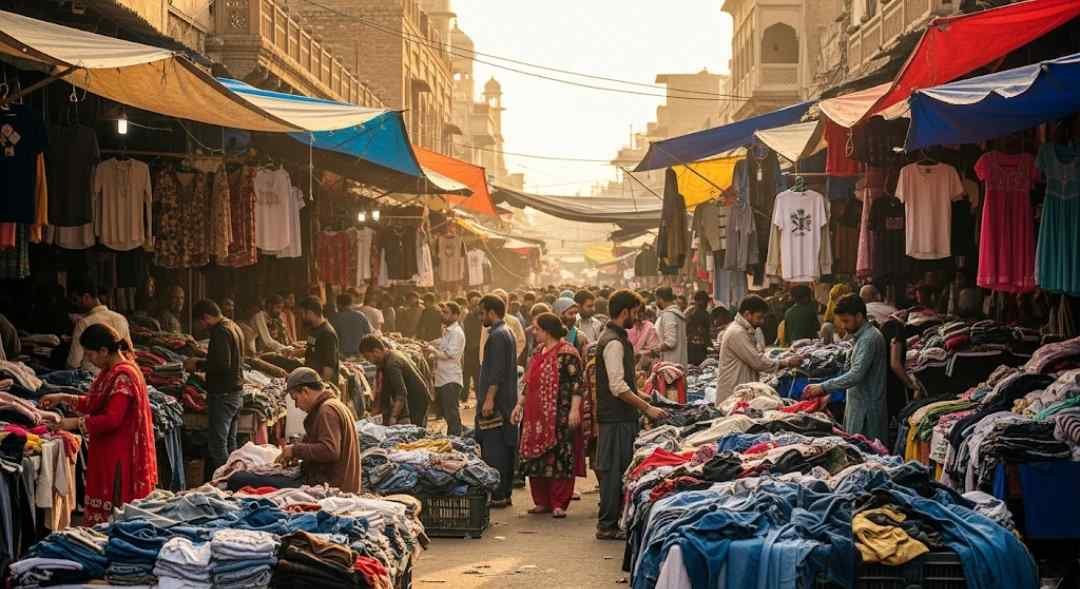Pakistan brought in a record 1.137 million tonnes of used clothing worth $511 million during the last fiscal year — a jump from the previous year’s 990,266 tonnes valued at $434 million. The surge underscores how worsening poverty is pushing millions toward cheaper wardrobe options.
Why the Jump?
The World Bank’s latest figures paint a grim picture: nearly 45% of Pakistanis now live below the poverty line. That benchmark has recently been revised upward from $3.65 to $4.20 per person per day, pushing the official poverty rate for lower-middle-income households from 39.8% to 44.7%.
For many families, especially in urban low-income neighborhoods and rural towns, landa bazaars — sprawling markets selling second-hand imports — have become an economic lifeline.
Traders Say Taxes Make Cheap Clothes Costlier
Muhammad Usman Farooqui, General Secretary of the Pakistan Second-Hand Clothing Merchants Association, says the boom in imports is directly tied to financial hardship. But he warns that taxes and duties are driving prices up for the very people who rely on these goods.
Currently, used clothing imports face a 10% regulatory duty, 5% customs duty, 6% advance income tax, and around 5% sales tax. There’s also a 5% tax on the profit margin between buying and selling prices. And under the Finance Bill 2024, importers are now responsible for collecting advance taxes from their wholesale buyers — at rates up to 2.5% for non-compliant retailers.
Farooqui argues this is unrealistic, as many in the used clothing trade work without formal business registration or fixed shop locations, making tax compliance difficult.
Where It Comes From — and Where It Goes
Most used clothes entering Pakistan come from Europe, the US, Japan, Korea, China, and Canada. Large exporters operating in Pakistan’s special economic zones handle the bulk of these imports, sorting through unsorted shipments to extract premium-quality items for re-export. Only 10–20% of the stock makes its way to local markets.
Import duties are charged per kilogram — Rs. 36 for clothing and Rs. 66 for shoes. Traders believe lowering these rates would directly ease the burden on lower-income consumers.
The Price Gap Tells the Story
Market checks reveal why demand is so high: a pair of imported second-hand jeans sells for Rs. 300–400, while a shirt goes for Rs. 250–300. Compare that to new sports shoes made in Lahore at Rs. 2,500–3,500 or imported branded shoes at Rs. 4,000–5,500. Used sports shoes, on the other hand, cost just Rs. 600–800.
With incomes stretched thin and prices of new goods rising, the second-hand clothing trade is not just surviving — it’s thriving. But for millions of Pakistanis, that’s less a fashion choice and more a matter of survival.

